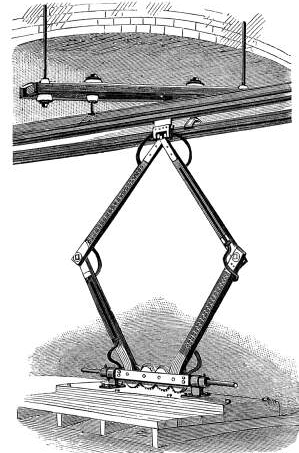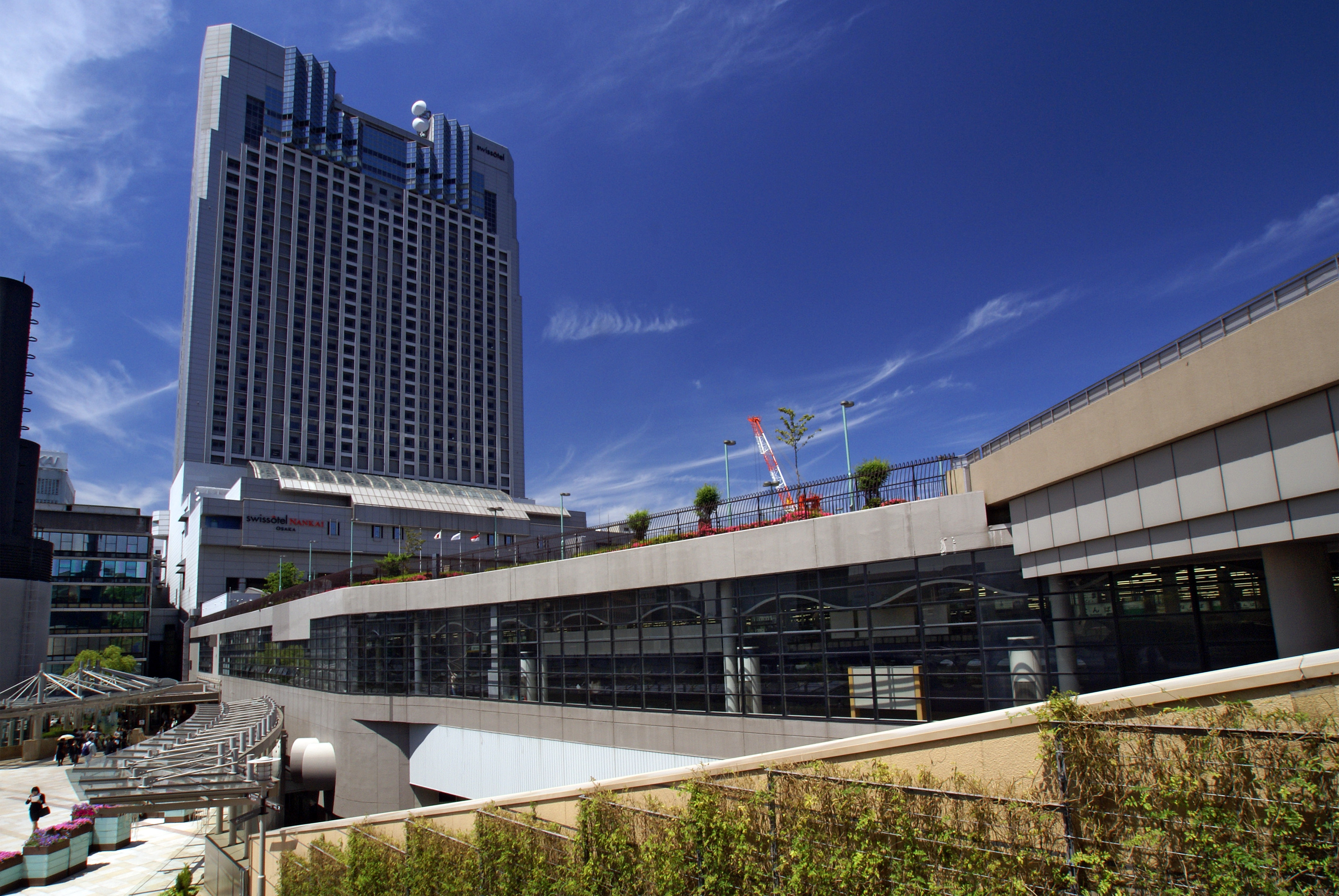|
Nankai 1000 Series
The is an electric multiple unit (EMU) train type operated by the private railway operator Nankai Electric Railway in Japan since 1992. Operations The 1000 series is used mainly on Nankai Line commuter services singly or coupled with 8000 series or 8300 series EMUs. 12 vehicles (one each of a two-car, four-car and six-car sets) are allocated for service on the Koya line. Formations , the fleet consists of six two-car sets (1001 to 1010), one four-car set (1051), and ten six-car sets (1031 to 1036). All the "Tc" and "Tc1" cars are at the Osaka-Namba end. The sets are formed as follows. 2-car sets The first half of the 2-car sets, 1031 to 1033, were part of the first batch which was completed in 1992. * The "M1" car is fitted with two scissors-type pantographs A pantograph (, from their original use for copying writing) is a mechanical linkage connected in a manner based on parallelograms so that the movement of one pen, in tracing an image, produces identical mov ... [...More Info...] [...Related Items...] OR: [Wikipedia] [Google] [Baidu] |
Tokyu Car Corporation
{{Disambiguation ...
Tokyu may refer to: * Tokyu Group, a group of companies centered on Tokyu Corporation ** Tokyu Corporation, a Japanese railway company, the largest member and parent company of the group ** Tokyu Car Corporation, a former Japanese railway vehicle manufacturer, now the Japan Transport Engineering Company ** Tokyu Hands Creative Life Store, a member of the Tokyu Group ** Tokyu Department Store, a department store chain based in Japan See also * Tokyo (other) or Tokyo Metropolis is the capital of Japan. Tokyo may also refer to: Places * Edo, former name of Tokyo until 1868 *Tokyo Prefecture (1868–1943), Tokyo Prefecture, former Japanese prefecture 1868–1943 that preceded Tokyo *Tokyo City, for ... [...More Info...] [...Related Items...] OR: [Wikipedia] [Google] [Baidu] |
Nankai 8000 Series
The is an electric multiple unit (EMU) train type operated by the private railway operator Nankai Electric Railway in Japan since 2008. Design The 8000 series design was developed from the earlier 1000 series EMUs first introduced in 1992. Operations The 8000 series is used on Nankai Line commuter services singly or coupled with 12000 series EMUs on ''Southern Premium'' limited express A limited express is a type of express train service. It refers to an express service that stops at a limited number of stops in comparison to other express services on the same or similar routes. Japan The term "limited express" is a common ... services to provide non-reserved accommodation. Formation , the fleet consisted of thirteen four-car sets formed as follows with two motored (M) cars and two trailer (T) cars. The two end cars are each fitted with one PT7144-B single-arm pantograph. Interior Passenger accommodation consists of longitudinal seating throughout, with a seat ... [...More Info...] [...Related Items...] OR: [Wikipedia] [Google] [Baidu] |
Nankai Electric Railway Rolling Stock
Nankai () is a family of schools in China founded by Yan Xiu (严范孙) (1860–1920) and Zhang Boling (张伯苓) (1876–1951). The schools include: * Nankai High School in Tianjin (天津南开中学) (1904). * Nankai University in Tianjin (南开大学) (1919). * The Nankai Women's High School (1923), Tianjin Second Nankai High School (天津第二南开中学) (present). * The Nankai Elementary School in Tianjin (天津南开小学) (1928, ruined in WW2). * Nanyu High School (1935), Chongqing Nankai Secondary School (重庆南开中学) (1936). * Chongqing Nankai Elementary School (重庆南开小学) (1937). * Shuguang Middle School in Zigong (自贡蜀光中学) (1937). * Nankai University Affiliated High School Nankai () is a family of schools in China founded by Yan Xiu (严范孙) (1860–1920) and Zhang Boling (张伯苓) (1876–1951). The schools include: * Nankai High School in Tianjin (天津南开中学) (1904). * Nankai University in Tianj ... (南� ... [...More Info...] [...Related Items...] OR: [Wikipedia] [Google] [Baidu] |
Electric Multiple Units Of Japan
Electricity is the set of physical phenomena associated with the presence and motion of matter that has a property of electric charge. Electricity is related to magnetism, both being part of the phenomenon of electromagnetism, as described by Maxwell's equations. Various common phenomena are related to electricity, including lightning, static electricity, electric heating, electric discharges and many others. The presence of an electric charge, which can be either positive or negative, produces an electric field. The movement of electric charges is an electric current and produces a magnetic field. When a charge is placed in a location with a non-zero electric field, a force will act on it. The magnitude of this force is given by Coulomb's law. If the charge moves, the electric field would be doing work on the electric charge. Thus we can speak of electric potential at a certain point in space, which is equal to the work done by an external agent in carrying a unit of p ... [...More Info...] [...Related Items...] OR: [Wikipedia] [Google] [Baidu] |
Pantograph (rail)
A pantograph (or "pan" or "panto") is an apparatus mounted on the roof of an electric train, tram or electric bus to collect power through contact with an overhead line. By contrast, battery electric buses and trains are charged at charging stations. The pantograph is a common type of current collector; typically, a single or double wire is used, with the return current running through the rails. The term stems from the resemblance of some styles to the mechanical pantographs used for copying handwriting and drawings. Invention The pantograph, with a low-friction, replaceable graphite contact strip or "shoe" to minimise lateral stress on the contact wire, first appeared in the late 19th century. Early versions include the bow collector, invented in 1889 by Walter Reichel, chief engineer at Siemens & Halske in Germany, and a flat slide-pantograph first used in 1895 by the Baltimore and Ohio Railroad The familiar diamond-shaped roller pantograph was devised and patented b ... [...More Info...] [...Related Items...] OR: [Wikipedia] [Google] [Baidu] |
Private Railway
A private railway is a railroad run by a private business entity (usually a corporation but not need be), as opposed to a railroad run by a public sector. Japan In Japan, , commonly simply ''private railway'', refers to a public transit railway owned and operated by private sector, almost always organized as a joint-stock company, or in Japanese: kabushiki gaisha (lit. stock company), but may be any type of private business entity. Although the Japan Railways Group (JR Group) companies are also kabushiki gaishas, they are not classified as private railways because of their unique status as the primary successors of the Japanese National Railways (JNR). Voluntary sector railways (semi-public) are additionally not classified as ''shitetsu'' due to their origins as rural, money-losing JNR lines that have since been transferred to local possession, in spite of their organizational structures being corporatized. Among ''private railways'' in Japan, the categorizes 16 companies as "ma ... [...More Info...] [...Related Items...] OR: [Wikipedia] [Google] [Baidu] |
Electric Multiple Unit
An electric multiple unit or EMU is a multiple-unit train consisting of self-propelled carriages using electricity as the motive power. An EMU requires no separate locomotive, as electric traction motors are incorporated within one or a number of the carriages. An EMU is usually formed of two or more semi-permanently coupled carriages, but electrically powered single-unit railcars are also generally classed as EMUs. The great majority of EMUs are passenger trains, but versions also exist for carrying mail. EMUs are popular on commuter and suburban rail networks around the world due to their fast acceleration and pollution-free operation. Being quieter than diesel multiple units (DMUs) and locomotive-hauled trains, EMUs can operate later at night and more frequently without disturbing nearby residents. In addition, tunnel design for EMU trains is simpler as no provision is needed for exhausting fumes, although retrofitting existing limited-clearance tunnels to accommodate the ... [...More Info...] [...Related Items...] OR: [Wikipedia] [Google] [Baidu] |
Nankai 8300 Series
The is an electric multiple unit (EMU) commuter train type operated by the private railway operator Nankai Electric Railway in Japan since 8 October 2015. Operations The 8300 series trains are used on Nankai Main Line, Nankai Wakayamakō Line, and Nankai Airport Line commuter services singly or coupled with 12000 series EMUs on Southern Premium limited express services to provide non-reserved accommodation. Since 22 November 2019, 8300 series trains have been used on Koya Line services. Nankai expects to deploy additional 8300 series trains and replace the entirety of the 6000 series fleet on the Koya Line by 2023. Formations , the fleet consists of five four-car sets (8301 to 8305) and six two-car sets (8701 to 8706). Two-car trainsets were also delivered from July 2016. Four-car sets The four-car sets are formed as follows, with two motored ("M") cars and two non-powered intermediate trailer ("T") cars. The motored cars each have one single-arm pantograph. Two-car sets ... [...More Info...] [...Related Items...] OR: [Wikipedia] [Google] [Baidu] |
Pantograph (transport)
A pantograph (or "pan" or "panto") is an apparatus mounted on the roof of an electric train, tram or electric bus to collect power through contact with an overhead line. By contrast, battery electric buses and trains are charged at charging stations. The pantograph is a common type of current collector; typically, a single or double wire is used, with the return current running through the rails. The term stems from the resemblance of some styles to the mechanical pantographs used for copying handwriting and drawings. Invention The pantograph, with a low-friction, replaceable graphite contact strip or "shoe" to minimise lateral stress on the contact wire, first appeared in the late 19th century. Early versions include the bow collector, invented in 1889 by Walter Reichel, chief engineer at Siemens & Halske in Germany, and a flat slide-pantograph first used in 1895 by the Baltimore and Ohio Railroad The familiar diamond-shaped roller pantograph was devised and patented b ... [...More Info...] [...Related Items...] OR: [Wikipedia] [Google] [Baidu] |
Nankai Electric Railway
is a private railway in Japan, founded in 1884. The name ''Nankai'' (which means "South Sea") comes from the company's routes along the Nankaidō, the old highway that ran south from the old capital, Kyoto, along the sea coast. Nankai predates all the electric railways in the Tokyo region. The Nankai network branches out in a generally southern direction from Namba Station in Osaka. The Nankai Main Line connects Osaka to Wakayama, with an important spur branching to Kansai International Airport. The '' rapi:t α'' express connects Kansai International Airport to Namba in 34 minutes, while the '' rapi:t β'' takes 39 minutes with two additional stops. The Koya Line connects Osaka to Mt. Koya, headquarters of the Buddhist Shingon sect and a popular pilgrimage site. IC cards (PiTaPa and ICOCA) are accepted. History The Nankai Railway Company was founded on June 16, 1884. In 1944 it was one of the companies that merged to form Kinki Nippon Railway Co., Ltd. (Kin-nichi, prese ... [...More Info...] [...Related Items...] OR: [Wikipedia] [Google] [Baidu] |
Insulated Gate Bipolar Transistor
An insulated-gate bipolar transistor (IGBT) is a three-terminal power semiconductor device primarily used as an electronic switch, which, as it was developed, came to combine high efficiency and fast switching. It consists of four alternating layers (P–N–P–N) that are controlled by a metal–oxide–semiconductor (MOS) Metal gate, gate structure. Although the structure of the IGBT is topologically the same as a thyristor with a "MOS" gate (MOS-controlled thyristor, MOS-gate thyristor), the thyristor action is completely suppressed, and only the transistor action is permitted in the entire device operation range. It is used in switching power supply, switching power supplies in high-power applications: variable-frequency drives (VFDs), electric cars, trains, variable-speed refrigerators, lamp ballasts, arc-welding machines, induction hobs, and air conditioners. Since it is designed to turn on and off rapidly, the IGBT can synthesize complex waveforms with pulse-width modulat ... [...More Info...] [...Related Items...] OR: [Wikipedia] [Google] [Baidu] |





